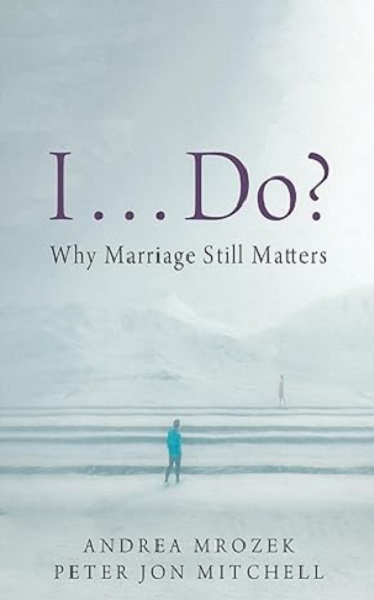Opinion
From mass graves to mass hysteria

The grounds of the former Kamloops Indian Residential School in British Columbia, where some believe Indigenous students may be buried — though there have not been any excavations. – Reuters
The Opposition with Dan Knight
A Canadian Teacher Fired for Challenging the Narrative on Residential Schools—Where’s the Evidence, Where’s the Justice?

|
I am a teacher buffeted daily by the chill winds of political indoctrination, censorship, conformity, and anti-education in schools.
|
The New York Post reported this month that “after two years of horror stories about the alleged mass graves of Indigenous children at residential schools across Canada, a series of recent excavations at suspected sites has turned up no human remains.” In July 2021 the Assembly of First Nations claimed the “mass grave discovered at the former Kamloops Indian Residential School was proof of a “pattern of genocide against Indigenous Peoples that must be thoroughly examined.”
Yet the Canadian government already examined residential schools from 2008-15 through The Truth and Reconciliation Commission, with Commission Chair Murray Sinclair telling the media the number of missing children “could be in the 15-25,000 range, and maybe even more.” To date there has not been a single missing child identified, and not a single document from a parent or chief indicating a child was missing from any of the almost 150 schools over almost 150 years.
I’m not ignorant of the subject of our past as I am informed on the subject of Indian Residential Schools as I am a member of the pan-Canadian Indian Residential Schools Research Group. I also did a Master’s degree in Educational History with specialization in Indian Educational Policy under the supervision of Dr. Robert Carney, who was once the leading expert on the schools. I also obtained a Ph.D. from the University of Toronto where I argued A Case Against Censorship in Literature Education. Professionally, I have taught in high schools, elementary schools, and colleges and was for a time Principal of Neuchâtel Junior College in Switzerland. My last position was in Abbotsford as a senior French Immersion History teacher. It is to Abbotsford that I now turn, for that is where I was fired.
One fateful day in May 2021 I was teaching Calculus 12 at a high school named after the painter Robert Bateman where news was feverishly spread about the discovery of the remains of 215 children in a mass grave at the site of the long-shuttered Kamloops Indian Residential School. The principal used the PA system to ask teachers to stop their regular instruction to navigate the upsetting news with students. In this context, I spoke about the history of residential schools, the dislocation and despair of prairie First Nations (most residential schools being located in the Canadian west), the Indian Act (1876) and its authors’ intentions to support its most marginalized communities, the role of the church as teachers and proselytizers, and the reports of abuse and neglect.
As it was a math class, some of the students were uninterested or bored by my history soliloquy, but one girl spoke up to say the schools represented “cultural genocide.” I agreed with her by saying that modern western schooling was mandatory for indigenous children after 1920, and a third of these children were placed in residential schools (another third attending day schools, and the final third receiving no education at all).
I considered the discussion to be like any other, with some students engaged and others on their phone or quietly doing equations, until a second student, flush with anger and indignancy, reacted to my comment that children who died tragically while enrolled in residential schools did so mostly from disease. She said the Christian teachers in Kamloops (Oblate priests and brothers as well as nuns from the Catholic order The Sisters of St. Ann) were “murderers who tortured students to death by leaving them out in the snow to die.”
I didn’t say anything more, for I feared an argument, and directed students to return to their Calculus work. The class was given a break a few minutes later, and unbeknownst to me the girl complained to a counsellor, who told the principal, who told the district, and before class was over that day, I had a visit from two male administrators who commanded me in front of my students to gather my things and leave. While being frog-marched through the corridor I repeatedly asked what I had done wrong, but they wouldn’t answer. When I was close to the front door I turned to them and said I wouldn’t be leaving without hearing from the principal what I had done. This request was granted, but all the principal would say to me was that it was something I said.
My suspension ended after eight months when the district released its investigator’s report, to which senior management appended a charge of professional misconduct, as the following excerpts show:
“While acting as a TOC for a Calculus 12 class, Mr. McMurtry…inferring [sic] that many of the deaths were due to disease was in opinion inflammatory, inappropriate, insensitive, and contrary to the district’s message of condolences and reconciliation.”
“He left students with the impression some or all of the deaths could be contributed to ‘natural causes’ and that the deaths could not be called murder.”
“Both Mr. McMurtry and student accounts had some students passionately saying the deaths were murder, [and] the graves were mass graves.”
“[We] consider this to be extremely serious professional misconduct.”
While on suspension I dug into the grave story of murdered children and found I was right. Indeed, there was no discovery at all at the residential school in Kamloops in the middle of the Tkʼemlúps te Secwépemc reserve. No graves. No bodies. No murder weapons. No police investigation. No historical record or documentation from a parent or tribal leader of a missing child. Nonetheless, prime minister Justin Trudeau unilaterally ordered that our country lower its flag from coast to coast and in our embassies around the world for over five months, though all that Culture/Media professor Sarah Beaulieu (the sole source of the story) found, using ground-penetrating radar in an abandoned apple orchard on the reserve, were soil anomalies, likely sewage trenches or tiles from 1924. My judgment day was February 21, 2023. The Abbotsford School District trustees had to pronounce on a recommendation for termination from management. That very day I saw that the National Post featured my story on Page 1. I was suddenly under a deluge of support from many media platforms, especially Rebel News which sent a reporter to cover the disciplinary hearing. I boldly predicted in front of supporters that my case was strong and the tide in Canada was turning against cancel culture and its witch hunts, but I was wrong. I was fired and will likely never teach again. Canadian historian Marcel Trudel wrote:
“There is nothing more dangerous than history used as a defense; or history used for preaching; history used as a tool is no longer history.”
I would add that there is nothing more dangerous, in these times, than teaching history truthfully.
In my termination letter this February the case against me changed again, this time it was no longer about what I said but only my “inflammatory, inappropriate, and insensitive tone” that one day two years ago. Then this August I received a letter from the regulatory body for teachers, called the Teaching Regulation Branch (formerly the BC College of Teachers), which changed the case against me again. Now I am accused of “falsely suggesting that student deaths at the schools were comparable to the general child mortality rate and not the result of a government strategy of cultural genocide.” In the same letter the TRB calls for the cancellation of my teaching certificate for life… before my case has arrived at arbitration, before an arbitrator has been chosen or dates have even been set, and long before the merits of my case have been fairly determined.
In Kafka’s play The Trial there is a familiar quotation:
“Someone must have been telling lies about Josef K., he knew he had done nothing wrong but, one morning, he was arrested.”
Subscribe to The Opposition with Dan Knight
I’m an independent Canadian journalist exposing corruption, delivering unfiltered truths and untold stories. Join me on Substack for fearless reporting that goes beyond headlines
Business
Mark Carney’s Fiscal Fantasy Will Bankrupt Canada

By Gwyn Morgan
Mark Carney was supposed to be the adult in the room. After nearly a decade of runaway spending under Justin Trudeau, the former central banker was presented to Canadians as a steady hand – someone who could responsibly manage the economy and restore fiscal discipline.
Instead, Carney has taken Trudeau’s recklessness and dialled it up. His government’s recently released spending plan shows an increase of 8.5 percent this fiscal year to $437.8 billion. Add in “non-budgetary spending” such as EI payouts, plus at least $49 billion just to service the burgeoning national debt and total spending in Carney’s first year in office will hit $554.5 billion.
Even if tax revenues were to remain level with last year – and they almost certainly won’t given the tariff wars ravaging Canadian industry – we are hurtling toward a deficit that could easily exceed 3 percent of GDP, and thus dwarf our meagre annual economic growth. It will only get worse. The Parliamentary Budget Officer estimates debt interest alone will consume $70 billion annually by 2029. Fitch Ratings recently warned of Canada’s “rapid and steep fiscal deterioration”, noting that if the Liberal program is implemented total federal, provincial and local debt would rise to 90 percent of GDP.
This was already a fiscal powder keg. But then Carney casually tossed in a lit match. At June’s NATO summit, he pledged to raise defence spending to 2 percent of GDP this fiscal year – to roughly $62 billion. Days later, he stunned even his own caucus by promising to match NATO’s new 5 percent target. If he and his Liberal colleagues follow through, Canada’s defence spending will balloon to the current annual equivalent of $155 billion per year. There is no plan to pay for this. It will all go on the national credit card.
This is not “responsible government.” It is economic madness.
And it’s happening amid broader economic decline. Business investment per worker – a key driver of productivity and living standards – has been shrinking since 2015. The C.D. Howe Institute warns that Canadian workers are increasingly “underequipped compared to their peers abroad,” making us less competitive and less prosperous.
The problem isn’t a lack of money; it’s a lack of discipline and vision. We’ve created a business climate that punishes investment: high taxes, sluggish regulatory processes, and politically motivated uncertainty. Carney has done nothing to reverse this. If anything, he’s making the situation worse.
Recall the 2008 global financial meltdown. Carney loves to highlight his role as Bank of Canada Governor during that time but the true credit for steering the country through the crisis belongs to then-prime minister Stephen Harper and his finance minister, Jim Flaherty. Facing the pressures of a minority Parliament, they made the tough decisions that safeguarded Canada’s fiscal foundation. Their disciplined governance is something Carney would do well to emulate.
Instead, he’s tearing down that legacy. His recent $4.3 billion aid pledge to Ukraine, made without parliamentary approval, exemplifies his careless approach. And his self-proclaimed image as the experienced technocrat who could go eyeball-to-eyeball against Trump is starting to crack. Instead of respecting Carney, Trump is almost toying with him, announcing in June, for example that the U.S. would pull out of the much-ballyhooed bilateral trade talks launched at the G7 Summit less than two weeks earlier.
Ordinary Canadians will foot the bill for Carney’s fiscal mess. The dollar has weakened. Young Canadians – already priced out of the housing market – will inherit a mountain of debt. This is not stewardship. It’s generational theft.
Some still believe Carney will pivot – that he will eventually govern sensibly. But nothing in his actions supports that hope. A leader serious about economic renewal would cancel wasteful Trudeau-era programs, streamline approvals for energy and resource projects, and offer incentives for capital investment. Instead, we’re getting more borrowing and ideological showmanship.
It’s no longer credible to say Carney is better than Trudeau. He’s worse. Trudeau at least pretended deficits were temporary. Carney has made them permanent – and more dangerous.
This is a betrayal of the fiscal stability Canadians were promised. If we care about our credit rating, our standard of living, or the future we are leaving our children, we must change course.
That begins by removing a government unwilling – or unable – to do the job.
Canada once set an economic example for others. Those days are gone. The warning signs – soaring debt, declining productivity, and diminished global standing – are everywhere. Carney’s defenders may still hope he can grow into the job. Canada cannot afford to wait and find out.
The original, full-length version of this article was recently published in C2C Journal.
Gwyn Morgan is a retired business leader who was a director of five global corporations.
Opinion
Charity Campaigns vs. Charity Donations

Over the past few years, I’ve had canvassers coming to my home in Toronto on behalf of a wide range of non-profits – including hospitals and mental health and homeless support organizations. The fundraisers all “wear” a noticeable post secondary student vibe. That’s hardly news.
But curiously, no matter what they’re collecting for, every last one of them uses the exact same methodology. That is, they refuse to take a one-time donation, instead insisting I sign up for six (not seven, and definitely not five) monthly payments. They don’t want me donating online through the organization’s website (explaining that they wouldn’t get credit for that). They do expect me to enter my basic information on a high-end tablet they’re carrying. When that’s done, they’ll use their smartphones to make a call to a remote agent who would take my financial information.
I only completed the process once – for the Hospital for Sick Children (SickKids) in Toronto. But that was mostly because, at the time, they were in the middle of quite literally saving my granddaughter’s life. I couldn’t very well say no.
Because of the paranoia that comes with my background in IT systems administration, I generally don’t participate, explaining that I never share financial information on a call I didn’t initiate. At the same time, these campaigns are not fraudulent and, with the possible exception of UNICEF, they all represent legitimate organizations. Nevertheless, they all come with the clear fingerprints of a third-party, for-profit company. Which makes me curious.
After a little digging, it became clear that a company called Globalfaces Direct was the most likely employer of the face-to-face (F2F) canvassers I’m seeing. It’s also obvious that those canvassers are paid at least partially through revenue-based commissions.
Estimating how much of your donations are actually used for charitable work can be difficult. For once thing, in the case of SickKids, it’s not even clear which organization the money is going to. There at least three related non-profit accounts registered with CRA: The Hospital for Sick Children, The Hospital for Sick Children Foundation, and the SickKids Charitable Giving Fund.
But even where there isn’t such ambiguity we have only limited visibility into an organization’s finances. Covenant House, for instance, issued receipts for $26 million in donations for 2024, but there’s no way to know how much of that came through Globalfaces Direct F2F campaigns. And there’s certainly no public record indicating how much of that $26 million was spent on commissions and overhead. CRA filings for Covenant House do report fundraising costs of $9.4 million in 2024, which was 22 percent of their total spending and 32 percent of all donations.
It’s likely that their $9.4 million in fundraising costs includes Globalfaces Direct’s canvasser commissions and overhead costs. But those are only some of the costs – which likely include events, direct mail, and other in-house efforts. In fact, it’s not unreasonable to assume that only 20-30 percent of each dollar raised through F2F canvassing is actually spent on charity work.
From the perspective of the non-profit, hiring F2F companies can generate new sources of stable, long-term income that would have been otherwise unattainable. Especially if the F2F agreement specifies withholding a percentage of what’s collected rather than charging a flat fee, then a non-profit has nothing to lose. Why wouldn’t SickKids or Covenant House sign up for that?
Of course, a lot of that will depend on how you think about the numbers. Taken as a whole, an organization that spends just 32 percent of their donations on fundraising activities is well within CRA guidelines: “Fundraising is acceptable unless it is a purpose of the charity (a collateral non-charitable purpose).” But if we just looked at the money raised through a F2F campaign, that percentage would likely be a lot higher.
Similarly, CRA also expects that: “Fundraising is acceptable unless it delivers a more than incidental private benefit.” In other words, if a private company like Globalfaces Direct were to realize financial gain that’s “more than incidental”, it might fail to meet CRA guidelines.
Unfortunately, there’s no easy way for donors to assess the numbers on those terms. So regular people who prefer to direct as much of their donation as possible to the actual cause will generally be far better off donating through an institution’s website or, even better, through a single CRA-friendly aggregator like CanadaHelps.org.
But it would be nice if CRA reporting rules clearly broke those numbers down so we could judge for ourselves.
-

 Fraser Institute1 day ago
Fraser Institute1 day agoBefore Trudeau average annual immigration was 617,800. Under Trudeau number skyrocketted to 1.4 million annually
-

 MAiD1 day ago
MAiD1 day agoCanada’s euthanasia regime is already killing the disabled. It’s about to get worse
-

 Frontier Centre for Public Policy1 day ago
Frontier Centre for Public Policy1 day agoNew Book Warns The Decline In Marriage Comes At A High Cost
-

 Business1 day ago
Business1 day agoPrime minister can make good on campaign promise by reforming Canada Health Act
-

 Addictions1 day ago
Addictions1 day ago‘Over and over until they die’: Drug crisis pushes first responders to the brink
-

 International1 day ago
International1 day agoChicago suburb purchases childhood home of Pope Leo XIV
-

 Daily Caller1 day ago
Daily Caller1 day agoUSAID Quietly Sent Thousands Of Viruses To Chinese Military-Linked Biolab
-

 Energy1 day ago
Energy1 day agoLNG Export Marks Beginning Of Canadian Energy Independence





